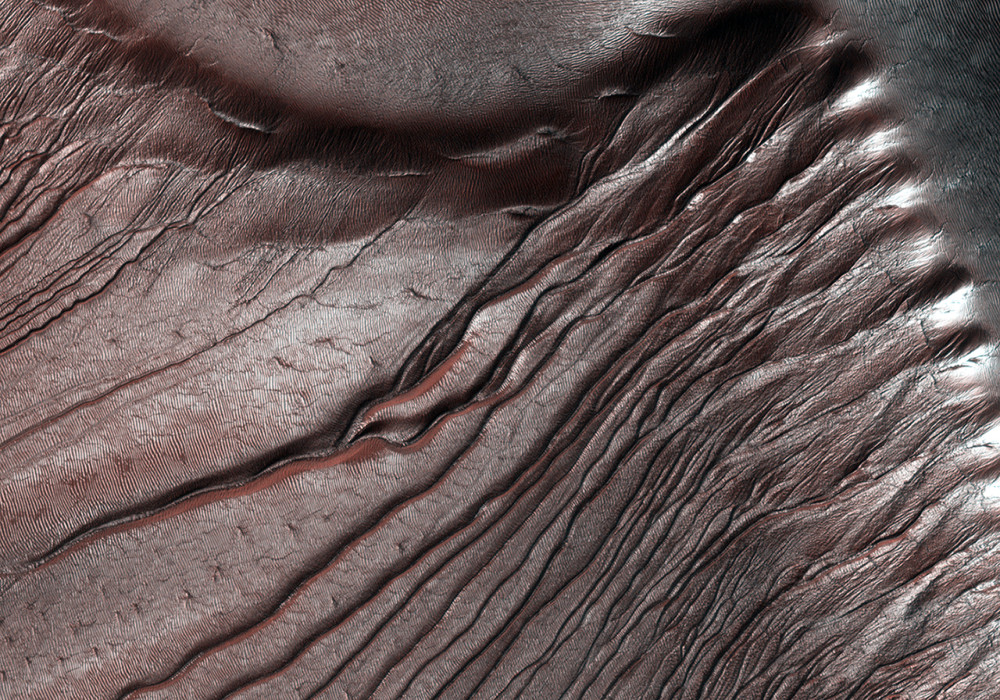Russell Crater dunes are a favorite target for HiRISE images not only because of their incredible beauty, but for how we can measure the accumulation of frost year after year in the fall, and its disappearance in the spring.
The frost is, of course, carbon dioxide ice that often sublimates (going directly from a solid to a gas) during the Martian spring. HiRISE takes images of the same areas on Mars in order to study seasonal changes like this. In an area like Russell Crater–a very ancient impact crater about 140 kilometers in diameter–we can follow changes in the terrain by comparing images taken at different times. This helps give us a better understanding of active processes on the Red Planet.
Written by: HiRISE Science Team (audio: Tre Gibbs) (5 February 2014)
More info and image formats at http://hirise.lpl.arizona.edu/ESP_034234_1255
Image: NASA/JPL/University of Arizona
